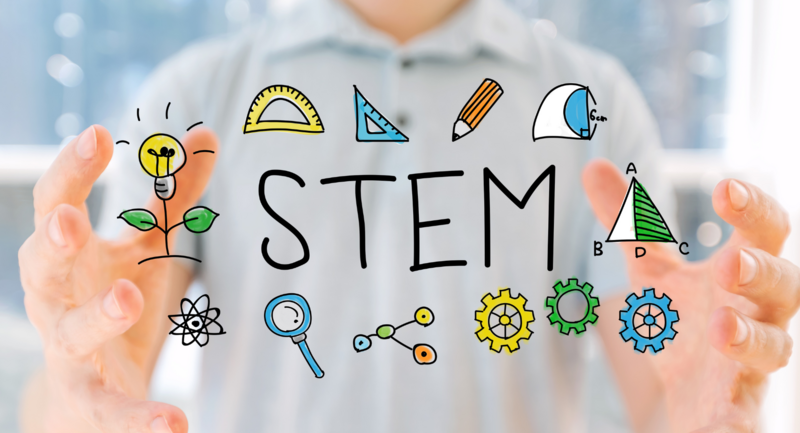Global warming. Artificial intelligence. COVID-19. Social media influencers. It’s hard not to see that issues with direct links to the subjects schools have traditionally bundled under the “STEM” label have an immediacy in young people’s lives today that is likely unprecedented.
As the contributors to this issue stress, this presents unique opportunities to schools and educators. For one, it opens up pathways for them to create learning experiences that are powerfully relevant and engaging to students—and that help them gain a deeper understanding of the forces shaping their lives and futures. By the same token, it challenges educators and leaders to reimagine STEM education so that it is more inclusive and applicable.
“Science is all around us,” NASA’s Lyle Tavernier says—as are math, engineering, and technology. The trick, as Tavernier and other contributors emphasize, is finding ways to connect these topics to students’ interests and teaching them in ways that capture their imagination and curiosity. This issue offers an array of ideas and frameworks for bringing STEM topics to life for students. One prominent theme running throughout is the need to place less emphasis on rote exercises and decontextualized formulas and more on hands-on or “doing” activities, “phenomenon-based” approaches, conceptual understanding, and authentic problem-solving and decision-making. For students to see how exciting and empowering STEM learning can be, they need more opportunities to engage in the “disciplinary practices” of real scientists, mathematicians, and engineers.
STEM subjects can also benefit from being “de-siloed”—not just from each other but from non-STEM subjects like language arts, history, and social studies.
To help students put their whole selves into this kind of work, educators can also take steps to break down some of the stereotypes that have developed around STEM education. They can reiterate, through words and images as well as actions, that STEM is not an exclusive club, but is open to contributions and insights from all students. Educators can also make learning environments and practices more collaborative and student-centered. In the right conditions, as several of the articles in this issue show, STEM has a unique power to re-engage students who have felt alienated by traditional academic studies.
For maximum impact, STEM subjects can also benefit from being “de-siloed”—not just from each other but from non-STEM subjects like language arts, history, and social studies. There is a strong emphasis in this issue on the power of interdisciplinary learning—on how STEM topics and practices can be enlivened and deepened by storytelling, community-based research, and ethical and justice-centered considerations.
When STEM lessons are contextualized through broader social lenses, as scholars Okhee Lee and Scott E. Grapin write, “All students, particularly those from groups that often are left out of STEM learning, can have the tools to better understand and solve societal problems." That is learning that has the potential to be truly transformational. Reflect & Discuss
➛ The relationship between STEM innovation and its impact on the planet requires much deeper treatment in our classrooms, the authors note. How might you work with students to explore this?
➛ What steps could you take to move toward more transdisciplinary STEM teaching in your school or district?
➛ Can you think of several teachers in
your school, in various subject areas,
you could collaborate with to co-plan a
unit around climate change?
➛ What skills and content from each of
your disciplines could be incorporated?
➛ For secondary teachers: Have you
found that your students are thinking
about, or anxious about, climate
change issues—and that they want to
address them in school?
➛ To what degree is your school’s
or classroom’s science
instruction phenomenon-based?
➛ As an instructional leader, have
you made any or all of the four
commitments to support this
shift in science instruction?
➛ If you lack a background in
science, how might you best
prepare to support this shift?
➛ How do you make all students
feel welcome in your STEM
program?
➛ What might the physical
spaces in your school convey
to a visitor about your STEM
program?
➛ What hands-on learning
experiences in STEM have
proven most engaging for
students?









